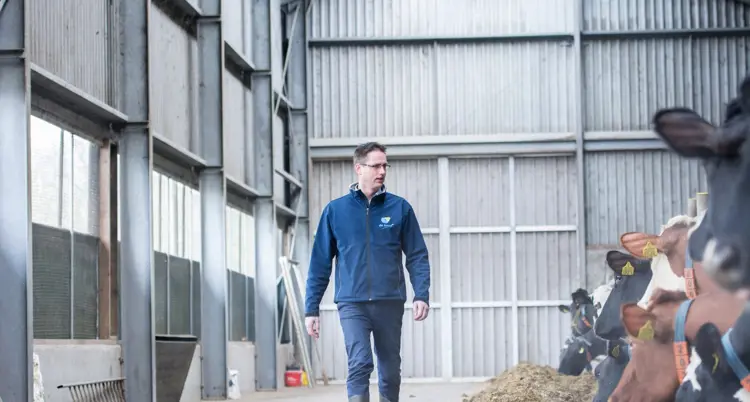How to provide for a balanced rumen
A well balanced rumen is important because it provides the basis for a cow to function well. As we all know, healthy well-functioning cows have an optimal milk production with proper milk solids. Furthermore, animals that look healthy and that produce milk easily contribute to the dairy farmer's work satisfaction. One of our Dutch Dairy Specialist gives an insight on how to establish this.

Let's get right down to business; what are the causes for rumen problems?
This can be caused by a variety of reasons. What we as De Heus’ Specialists regularly encounter is rumen acidosis caused by rapid digestible ('fast') grass silages. In practice, particularly the first and second cut silages are much faster than anticipated. In theory the silages appear to be slow-fermentable, but in reality they are much faster.
What can a Dairy farmer do about this?
You can feel, see and smell to get a clue. Be alert in case of silages where the ensiled grass seems to have limited structure, with low dry matter content and in case of silages that smell more sour. When you detect this, you may need to adjust your ration. Should you miss these signs and such silage forms part of the dairy cattle ration, you may observe a number of typical characteristics among the dairy cows. You will see changes in manure, the cow's behind will often be 'dirty' and the cow may be foaming at the mouth. In a somewhat more advanced stage the cow will be lying down with the head facing the rumen). In addition, it is possible that milk production drops for a longer period without clear reasons for the this decrease. In modern farms you will regularly see that the milking robot is experiencing reduced activity. All these signs could point to a rumen that is no longer healthy.
Of course you will also see a change in the milk production. Milk production is moderate and solids go down. The fat concentration in particular may be on the low side. When the rumen is unstable for a prolonged period, fertility may decline and hoof problems may occur.
How can this be corrected?
When you observe these issues, you can ask for the help of one of the De Heus’s Dairy specialist. Together with the Dairy farmer we look for opportunities to reduce fermentation speed. We start by checking whether using other roughage available on the farm in an option. For example, making corrections using a silage that is fermented slowly. Such silage can perfectly be combined with the fast-fermenting silage. The key is to look for slower-fermenting feeds with sufficient structure.
If correction with other silages is not possible it is wise to start looking at supplements. Several options are available for this purpose. For example, you may decide to administer a minimum of 150 grams of sodium bicarbonate per cow per day. You can do this directly at the feed fence, but it is better to include the sodium bicarbonate in the mixer wagon.
Another solution is to correct the ration by using soy hulls or other structure-rich products such as hay and rapeseed straw. At the same time, it is important to switch to feed pellets with a high level of crude fibre. De Heus offers a wide range of pellets for Dairy cows suited for every need. They include slowly-fermentable feeds. The cows will look better, become more active and will produce better manure.
How does the transition to grazing effect the rumen balance
That is a good point, because it can indeed seriously affect the rumen balance. If a Dairy farmer applies grazing, it is important to ensure that the cows have optimal rumen health before commencing grazing. The cow's rumen must be in perfect health so that fresh grass, which may also be rapidly fermentable, is properly digested. Furthermore, the composition of fresh grass varies greatly, for example due to weather conditions. If the rumen is not healthy, it is difficult for the cow to accommodate these changes. This also applies to Dairy farmers who keep their herd inside and feed fresh grass at the feed fence. It is therefore important to make the transition to fresh grass correctly. When starting grazing, it is recommend that this is done in phases. During the first phase you let the cows out during the afternoon only, for example. Once the rumen is properly adjusted, you can expend the time grazing. This way the rumen remains stable, thus enabling the cow to accommodate to these changes. This also minimises the risk of rumen acidosis.
What other factors affect the rumen balance?
In principle, any situation involving change for the cow represents a risk to the rumen balance. Stressful situations in particular can cause rumen acidosis. For example, the period around calving. Cows that have recently calved may have a lower feed intake than desired, which may cause rumen problems. Such cows often consume less roughage (and therefore less structure-rich food), because it does not feel completely well yet. You can help the cow by stimulating feed intake and ensuring that it consumes sufficient crude fibre. The period prior to calving can also be an influencing factor in this respect. A proper preparation for the dry period will optimally support the cow.
